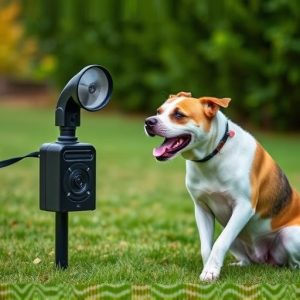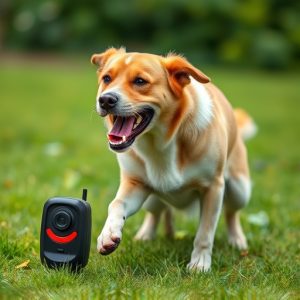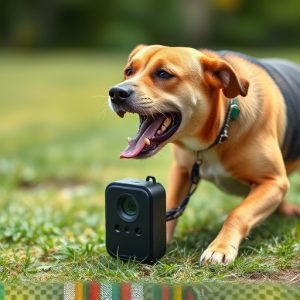Handheld Dog Deterrents: Maximize Coverage for Effective Repellency
Electronic animal repellents, particularly handheld dog deterrents, provide a humane alternative to…….
Electronic animal repellents, particularly handheld dog deterrents, provide a humane alternative to chemical or physical barriers by emitting high-frequency sounds that disturb animals like dogs and cats. Key features include coverage area, power levels, and frequency settings, which affect their effectiveness. Success depends on strategic placement and adherence to manufacturer-recommended coverage areas for optimal protection of outdoor spaces like gardens and patios.
“Discover the revolutionary power of electronic animal repellents, a modern solution for keeping unwanted four-legged visitors at bay. This article explores the science behind these devices and their effectiveness in deterring dogs, especially when considering crucial features like coverage area and application methods.
We’ll guide you through the process of choosing the ideal handheld dog deterrent, highlighting key aspects to ensure maximum protection for your space. From understanding the technology to mastering optimal placement, get ready to repel intruders with a modern twist.”
- Understanding Electronic Animal Repellents: How They Work
- Key Features to Consider in a Handheld Dog Deterrent
- Coverage Area and Application: Maximizing Effectiveness
Understanding Electronic Animal Repellents: How They Work
Electronic animal repellents are innovative devices designed to deter and keep animals away from specific areas, offering a humane alternative to traditional chemicals or physical barriers. These repellents work by emitting sounds or ultrasonic waves within a defined coverage area, creating an unpleasant experience for the target animals without causing them harm. The handheld design makes them easy to use and deploy, allowing users to carry them wherever needed.
For instance, in terms of coverage area, these devices can vary depending on their power output and frequency range. Handheld dog deterrents, a popular type, typically cover small to medium-sized areas, making them ideal for residential backyards or patios. They emit high-frequency sounds that are often inaudible to humans but disturb dogs, cats, or other animals, encouraging them to stay away. This technology is especially useful for homeowners looking to protect their gardens or outdoor spaces from unwanted animal visitors without resorting to harmful chemicals.
Key Features to Consider in a Handheld Dog Deterrent
When choosing a handheld dog deterrent, several key features can significantly impact its effectiveness and your overall experience. One of the most crucial aspects is the coverage area. This refers to how far the device’s signal can reach, determining its range of influence over potential problem areas. A larger coverage area ensures that you can protect a broader region, be it a backyard, patio, or even a smaller park, from unwanted dog intrusions.
Additionally, consider the device’s power and frequency settings. Adjustability in these areas allows for customization to different environments and situations. For instance, you might want higher power levels in heavily trafficked areas with persistent dog problems but lower settings for more subtle deterrents in less frequented spots. This flexibility ensures that your handheld dog deterrent is adaptable and efficient.
Coverage Area and Application: Maximizing Effectiveness
The effectiveness of an electronic animal repellent, especially a handheld dog deterrent, is greatly influenced by its coverage area. A larger coverage area ensures that more space is protected from unwanted animal intrusion. This is particularly important for outdoor spaces like gardens, patios, and even livestock pens where animals can roam freely. Handheld devices offer versatile control, allowing users to direct the repellent’s signal precisely towards problem areas. By focusing on hot spots where animals frequently enter or cause damage, you maximize the device’s impact without wasting energy on unused zones.
Proper application involves strategic placement of the handheld dog deterrent. It should be used in conjunction with the specific coverage area provided by the manufacturer to ensure optimal results. For instance, placing the device along fences or walls can create a barrier that deters dogs from entering certain areas. Regular movement of the device across problem zones can also enhance its effectiveness, as animals tend to avoid areas where they consistently encounter the repellent’s signal.
Electronic animal repellents, particularly handheld dog deterrents, offer a safe and effective solution for keeping unwanted four-legged visitors at bay. By understanding how these devices work and considering key features like coverage area, you can maximize their effectiveness. When used properly, these repellents can create a comfortable outdoor space for you and your pets, ensuring everyone can enjoy the fresh air safely and peacefully.


